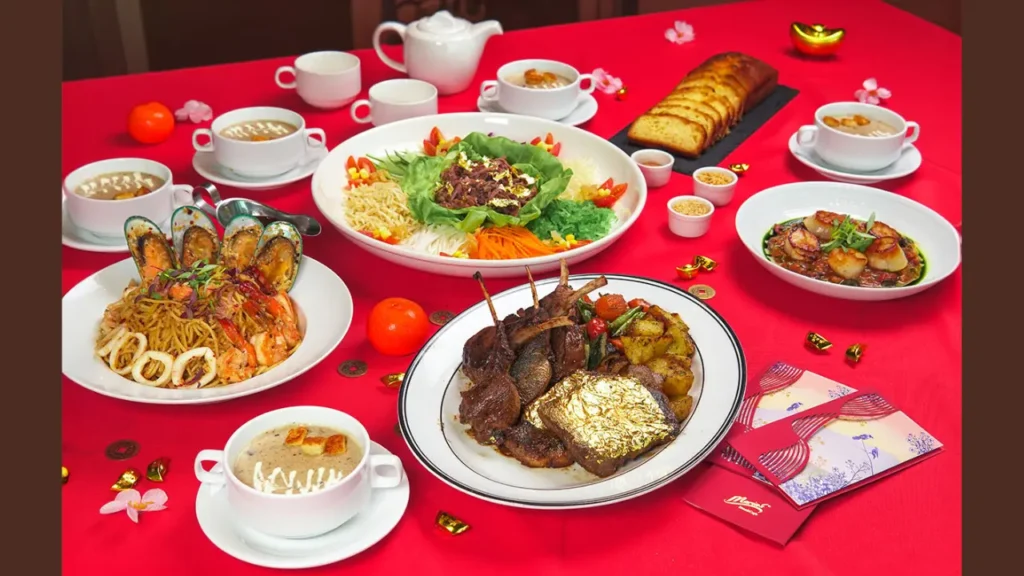Malaysia is home to one of the richest food cultures in the world, and the Chinese food menu is a big part of that. Across cities like Kuala Lumpur, Penang, Melaka, and Johor Bahru, Chinese cuisine blends history, flavor, and tradition. Malaysian Chinese dishes offer bold tastes, comforting textures, and colorful presentations that have become a daily part of local life.

Chinese Food Menu in Malaysia
The Chinese food menu in Malaysia developed over centuries, thanks to early Chinese immigrants. They brought Cantonese, Hokkien, Teochew, and Hakka flavors, which were adapted to local tastes. Today, Malaysian Chinese food is unique, mixing authentic techniques with local spices, tropical ingredients, and Malay culinary influences.
Food Menu with Prices
| Dish | Typical Serving Size | Average Price (MYR) |
|---|---|---|
| Hainanese Chicken Rice | 1 plate | RM 8–12 |
| Char Kway Teow | 1 plate | RM 8–15 |
| Bak Kut Teh | 1 claypot for 2–3 people | RM 30–50 |
| Dim Sum Platter | 5–8 pieces | RM 15–30 |
| Sweet and Sour Pork | 1 medium plate | RM 18–28 |
| Herbal Jelly (Gui Ling Gao) | 1 bowl | RM 6–10 |
Popular Staples

In every kopitiam, hawker center, or Chinese restaurant across Malaysia, you’ll find familiar favorites. A typical Chinese food menu offers fragrant chicken rice, spicy char kway teow, herbal bak kut teh, and crispy roast meats. Each dish shows a love for balance between sweet, salty, sour, and spicy flavors.
Key Ingredients
Rice and noodles form the base of almost every dish on the menu. Proteins like chicken, pork, shrimp, and tofu are combined with fresh vegetables. Ingredients such as garlic, ginger, soy sauce, sesame oil, and chilies enhance the taste. Local additions like sambal and belacan (shrimp paste) add a Malaysian twist.
Best-Selling Dishes

Across Malaysia, these dishes are often the most ordered from the Chinese food menu:
| Dish | Description | Flavor Profile |
|---|---|---|
| Hainanese Chicken Rice | Poached chicken with oily fragrant rice, chili sauce, and cucumber | Savory and Mild |
| Char Kway Teow | Stir-fried flat rice noodles with prawns, eggs, and Chinese sausage | Smoky and Spicy |
| Wantan Mee | Egg noodles with barbecued pork, vegetables, and wantons | Sweet and Savory |
| Bak Kut Teh | Herbal pork rib soup served with tofu and youtiao | Herbal and Umami |
| Claypot Chicken Rice | Rice cooked in a claypot with marinated chicken and sausage | Smoky and Savory |
Regional Varieties
The beauty of the menu in Malaysia is how it changes by region. In Penang, street vendors serve wok-fried dishes like Penang Char Kway Teow, loaded with seafood. In Klang, bak kut teh is more herbal and served with lots of broth. Meanwhile, Melaka offers a spicier version of traditional Chinese dishes, thanks to the Peranakan influence.
Breakfast, Lunch, and Dinner Choices
For breakfast, Malaysians enjoy dim sum, wantan mee, or chee cheong fun (rice noodle rolls). Lunch menus often feature roast duck rice, claypot loh shu fun (silver needle noodles), or economy rice with a variety of sides. Dinner usually means larger meals with dishes like sweet and sour pork, stir-fried kailan, and steamed fish.
Modern Twists
Today, the Chinese food menu in Malaysia has adapted to modern tastes. Many outlets now offer vegetarian versions of classics like Hainanese chicken made with tofu skin. Healthier options include brown rice, chicken rice, or steamed dishes with less oil. Even international influences can be seen, such as cheese-baked rice with Chinese-style chicken chop.
Desserts and Drinks
No, the menu is complete without desserts and drinks. Popular choices include:
- Tau Fu Fah: Silky smooth soybean pudding served with syrup.
- Mango Sago: A refreshing dessert with mango chunks and sago pearls.
- Chinese Herbal Tea: A cooling drink to balance the heat from spicy meals.
These items provide the perfect sweet ending to a hearty Chinese meal.
Best Places to Enjoy
For the best experience, Malaysia offers countless choices. In Kuala Lumpur, visit Petaling Street for authentic Hokkien Mee. In Penang, Gurney Drive Hawker Centre is famous for its Char Kway Teow. If you are in Johor Bahru, Taman Sentosa boasts seafood-rich Chinese dishes. Melaka’s Jonker Street serves classic Nyonya-Chinese dishes that blend spice and sweetness beautifully.
Locations
| State/City | Popular Areas for Chinese Food | Famous Dishes Available |
|---|---|---|
| Kuala Lumpur | Petaling Street, Jalan Alor | Hainanese Chicken Rice, Dim Sum, Roast Duck |
| Penang | Gurney Drive, Kimberley Street | Char Kway Teow, Lor Bak, Oyster Omelette |
| Melaka (Malacca) | Jonker Street, Jalan Bunga Raya | Chicken Rice Balls, Nyonya Laksa, Claypot Rice |
| Johor Bahru | Jalan Wong Ah Fook, Taman Sentosa | Kam Heong Crab, Sweet and Sour Pork, Wantan Mee |
| Ipoh | Jalan Theatre, Concubine Lane | Bean Sprout Chicken, Ipoh Hor Fun, Salted Chicken |
| Klang | Jalan Stesen, Pandamaran | Bak Kut Teh, Hokkien Mee, Herbal Soups |
| Kota Kinabalu (Sabah) | Gaya Street, Foh Sang | Tuaran Mee, Seafood Fried Rice, Chinese Hotpot |
| Kuching (Sarawak) | Carpenter Street, Padungan | Kolo Mee, Sarawak Laksa, Chinese Roasted Pork |
| Seremban (Negeri Sembilan) | Seremban Town Centre | Seremban Siew Pau, BBQ Pork Noodles |
| Alor Setar (Kedah) | Pekan Cina Area | Fried Kway Teow, Steamed Fish, Chinese Herbal Soups |
Conclusion
In Malaysia, the Chinese food menu is not just about eating; it’s about enjoying culture, history, and community. From early morning dim sum breakfasts to late-night claypot meals, Malaysian Chinese cuisine offers something for everyone. The variety, affordability, and authenticity found across the country make every meal a celebration. Whether you are a visitor or a local, discovering the richness of the food menu in Malaysia is an experience you will always treasure.
Leave a Reply